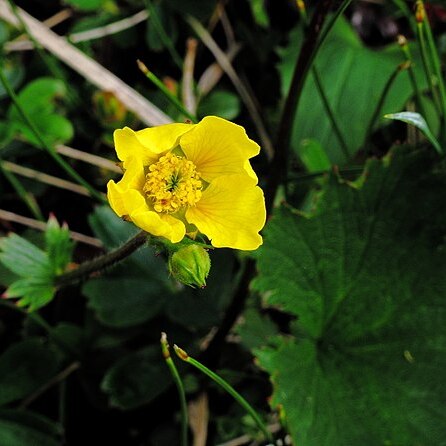Plants subscapose. Stems 7–40 cm, glabrate, sparsely downy, or pilose proximally, downy or pilose distally. Leaves: basal 5–15 cm, blade strongly lyrate-pinnate, major leaflet 1, minor leaflets 4–10, terminal leaflet much larger than minor laterals; cauline 0.8–1.7(–2.5) cm, stipules not evident, blade ?bractlike, not resembling basal?, simple, 3-fid. Inflorescences 1–2(–4)-flowered. Pedicels densely downy, usually eglandular. Flowers erect; epicalyx bractlets 2–3 mm; hypanthium green; sepals spreading, 4–7 mm; petals spreading, yellow, obcordate, nearly orbiculate, or broadly ovate, 9–13 mm, nearly 2 times sepals, apex broadly rounded, emarginate, or irregularly erose. Fruiting tori sessile, glabrous. Fruiting styles wholly persistent, not geniculate-jointed, 6–9 mm, apex not hooked, pilose in basal 1/3, eglandular. 2n = 42.
More
Stems 1.5–4 dm from a coarse rhizome, nearly smooth below, more hairy above; basal lvs with a rounded-reniform terminal lfl 5–10 cm wide, shallowly 5–7-lobed, sharply and irregularly serrate, truncate to subcordate at base, and 0–6 much smaller, laciniate lateral lfls rarely over 1 cm; cauline lvs resembling the lateral lfls of the basal lvs; sep triangular, twice as long as the bractlets; pet yellow, 8–15 mm, spreading; mature styles 8–10 mm, hairy about half their length; 2n=42. Damp slopes and alpine meadows in the higher mts. of Me. and N.H. July, Aug. (Sieversia p.)


